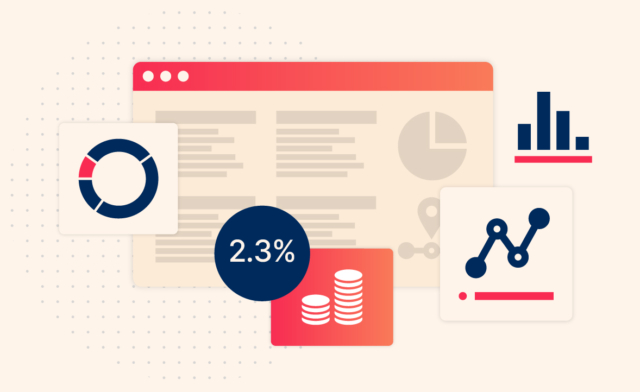Data-Driven Recruitment: The 6 Advantages of Optimizing Hiring Using Analytics

Data-driven recruitment isn’t merely a solid alternative to the gut-driven recruitment of old. In fact, it’s an across-the-board upgrade, offering huge benefits and being relatively straightforward to implement.
This raises an obvious question, so let’s pose it: why isn’t it everywhere? Surely a system that makes so much sense would be impossible to miss. Well, there are two big reasons why there are still businesses yet to take the plunge:
- Firstly, the broader field of digital transformation still remains obscure to many people, particularly those working in non-technical roles. Consider this: services like Netflix have been mainstream for many years, yet there are no doubt millions of people around the world who know nothing about them. Information doesn’t spread to everyone at the same time.
- Secondly, plenty of old-school professionals believe they already have optimized recruitment. Those who were initially hired through classic recruitment methods tend to defend them, and HR leads generally want to believe they’re uniquely positioned to sense talent. This makes it hard to get new recruitment systems approved.
Since you’ve landed on this page, one of those reasons is likely at play. Maybe you’ve vaguely heard of data-driven recruitment and want to learn more about it, or maybe you’re trying to build a case to win over stubborn decision-makers.
Either way, you’re in the right place. This article will explain what data-driven recruitment actually involves, detail the benefits, and share some actionable tactics to help you upgrade your hiring process and score the best talent. Let’s get started.
What is Data-driven Recruitment?
In short, data-driven recruitment uses the in-depth analysis of relevant data to make better decisions throughout the recruitment process. The data typically stems from multiple sources, including candidate assessments and application tracking systems.
To understand the significance of this approach, think about the traditional hiring process. Picture recruiters manually sifting through hundreds of resumes, inevitably missing things along the way, and making decisions instinctively or even randomly. Doing things that way inevitably yields inconsistency, irrationality, and heavy bias.
Today, businesses of all shapes and sizes have easy access to remarkable quantities of information, and they use it to achieve all manner of things. They accelerate their processes, lower their costs, bolster their support services, and do so much more.
And since a company’s greatest assets are its employees, using information to hire the right people at the right times is an obvious priority. Data-driven hiring gets rid of guesswork and biases, reduces time-to-hire, and cuts overhead costs. So what is data-driven recruiting? A path leading to the ideal workforce.

Understanding the Data-Driven Recruitment Process Through Implementation Examples
Now that we’ve briefly covered what data-driven recruitment is, we can touch upon what it actually looks like. To do this, we can examine several phases of the recruitment process to see how they work with enriched data analysis.
Candidate sourcing is the first step, of course, and the classic way to find candidates is to create a generic job posting, post it on various sites, and supplement it with some basic networking (usually just asking around to see if anyone knows someone suitable). This works, but it can be slow and rather limited.
In data-driven recruitment, candidates are sourced much more broadly and efficiently. Systems can seek out relevant professionals across the web, even using social media platforms, and produce lengthy lists of viable prospects. They can write refined postings with phrasing and more likelihood of attracting talent. They can factor in job histories and even parse candidates’ answers to open-ended questions.
Then there’s the matter of booking interviews. Classic recruitment requires personal engagement, which takes time and effort. Find the contact details for a candidate, get hold of them, propose a slot and channel… It doesn’t sound like much, but small inconveniences quickly add up at scale.
Data-driven recruitment utilizes AI to handle as much of the interviewing process as you need. If you want to be hands-off, you can even use software solutions to book and run multi-stage interviews (even video interviews) including core assessments.
The data-driven recruitment process, then, offers a mix of insights and automations. Actions that are worth carrying out manually are empowered and accelerated, and those that aren’t are automated with remarkable efficiency and economy. Vitally, the roles of gut instinct and individual perception are all but entirely removed.
The Benefits of Data-driven Recruitment
We’ve asserted that data-driven recruitment is an across-the-board upgrade, but what exactly can you expect to see when implementing it? Here are just some of the most significant Benefits of Data-Driven Recruiting:
1. Higher quality of hires
Data-driven assessments can factor in the key traits that lead to success in specific roles, allowing organizations to make evidence-based hiring decisions that see the best candidates offered positions. Given that sourcing capable employees is immensely important in business, this benefit alone would be enough to justify a data-driven approach to hiring.
And since the strength of the fit between a new hire and their position directly impacts the likelihood of them staying with the company for a while, this improvement also results in reduced turnover. Never forget that it’s significantly more expensive to replace a valuable employee than it is to keep them. The lower turnover gets while maintaining strong output, the better.
2. Bias-free hiring decisions
As awareness of the impact of bias and discrimination in hiring has risen (and relevant laws have developed), organizations have come to understand the pressing need to avoid partiality in how they operate. Due to the often-unconscious nature of favoritism, though, simply making an effort to be more objective may not work.
This is where the objectivity of recruitment algorithms becomes so impactful. Using data-driven recruitment ensures that candidates are evaluated based on their qualifications, skills, and experiences—not their personal characteristics. The personal feelings and perceptions of recruiters are left by the wayside. This leads to increased fairness and equality and serves to build more inclusive and diverse workforces.
3. Faster time-to-hire
Hiring is an expensive process. Paying recruiter salaries and placing job listings in the right places is a substantial burden, and the longer a company goes without filling a key vacancy, the more it loses through missed productivity. Given the average length of the onboarding process, it’s best to secure a hire as soon as possible.
Data-driven recruitment helps with this by enabling organizations to expedite the hiring process, cutting out major inefficiencies in finding, choosing and securing the best candidates. This proves particularly vital in industries where top professionals tend to stay with employers for long periods, as it makes it possible to act faster than competitors when leading talents start looking for new opportunities.
4. Greater process efficiency
The scattergun approach to hiring is resource intensive and inefficient, but it’s often chosen because businesses don’t know exactly where to start. They lack confidence in their decisions, so they end up wasting time advertising on irrelevant channels or interviewing unsuitable candidates.
Data analytics allow recruiters to optimize their processes, placing focus on effective tactics and eliminating wastage. The reduction in time-to-hire that we just covered might otherwise demand greater expenditure, but this streamlining facilitates a combination of faster results and lower process costs that has the power to drive a big improvement in the return on investment of a Talent Acquisition department.
5. Improved candidate experience
The quality of a company’s Candidate Experience is perhaps the biggest factor in making it competitive in the hiring market. Being able to make the biggest monetary offer isn’t enough, particularly since today’s candidates are generally in search of more than just money. They want to work for companies that will treat them well, communicate effectively, and support their growth.
During the hiring process, data-driven talent acquisition makes a business much more appealing by enabling tailored engagement methods. Personalized messaging, smart channel choices and speedy response times can pique a candidate’s interest and push them away from seeking other opportunities. And the more the systems run, the more feedback they can gather, allowing iteration.
6. Better recruitment planning
Leading companies are among the best at anticipating workforce requirements. Well before they’re ready to hire for specific positions, they can determine what the candidates will require, check for viable talent, and align their recruitment strategies to ensure they’re ready down the line.
They can only do this through the use of extensive data collection and analysis throughout the recruitment process. By analyzing data on such things as hiring trends, candidate demographics, and skill gaps, they can tweak their talent pipelines and implement proactive recruitment initiates (such as employer branding campaigns or talent development programs) to deliver qualified candidates.
How to Adopt Data-Driven Recruiting
If you see the value of data-driven recruitment and have the go-ahead to implement it, you can break the process down into just three core steps. Tweak them to fit your business and they’ll build a strong data-driven recruitment strategy. Here they are:
1. Select the right metrics
Using data to underpin your recruiting strategy is obviously essential, but it’ll only help you if you get the right dataset—and that means picking the right metrics to track. You can count the syllables in every applicant’s name if you’d really like to, but that’s unlikely to help you when it comes to identifying the best candidate.
Here are some of the hiring-related metrics that tend to prove very useful:
- Quality of hire
- Cost per hire
- Time to hire
- Hiring source
- Candidate Experience score
- Job offer acceptance rate
- Turnover rate
- Time to productivity
What a given metric looks like varies from company to company. You can count on some to function identically for any strategy (quality of hire, cost per hire, and time to hire, for instance), but you’ll need to decide how others will fit your specific business.
Keep in mind that trying to make all of these metrics pivotal will probably muddy the waters, making it hard for you to collect enough data and make clear decisions. To begin with, at least, you should try to keep things fairly simple and focus on the biggest issues facing your hiring process.
You might find it easy to attract candidates but struggle to keep employees, for instance, or struggle with getting ROI from your hiring practices as a whole. Perhaps your turnover rate is impressively small but your time to productivity is far too long, reflecting issues with securing and onboarding new hires.
Different problems require different solutions and sets of metrics shedding light on them, so find the metrics most suitable for your operation (a handful at most) and see how you fare. You can try using different metrics later if necessary.
2. Use software to collect data
While you can collect some kinds of data through tools like Google Analytics or survey sites, this can be time-consuming. The best way to collect data efficiently is to use a suitable software solution. The right system can help you collect data, store applicant information, and track candidates throughout the hiring process.
Before you can use such a system, though, you must choose it. There are many viable platforms on the market, but they vary hugely in quality, functionality, and pricing. This isn’t a decision to take lightly. Whatever platform you decide to commit to will become a fundamental part of your recruitment process for the foreseeable future.
If you’re considering Data-Driven Recruitment Software, we naturally recommend giving Oleeo’s AI-enhanced solution a try. With a wide range of third-party integrations, insight-centric dashboards and deep automation, the Oleeo platform makes it easy to gather relevant data and use it to achieve huge improvements.
3. Put the data to good use
The next step will depend on your hiring needs. Think about the insights you drew from the previous step and what they say about your current hiring process. Where is your recruitment falling short of the mark? Where are your biggest opportunities to improve? Are there easy wins for the taking?
Let’s say the data shows your time-to-hire could use improvement. Using everything you’ve gathered, you can identify the roadblocks and bottlenecks slowing down your process, then find appropriate solutions. Perhaps you can hone your screening process to more quickly isolate the best candidates, or use better assessment tools to ensure that only those who excel under pressure remain under consideration.
Or maybe the data shows that you’re excellent at handling applications and running the Interview Process but struggling to convince ideal candidates to join you. If that’s the case, you might need to offer more competitive benefits, tweak the overall messaging behind your business, or expand data-driven candidate screening to glean more details you can use to shape personalized compensation packages.
It’s important to remember, however, that data in recruitment can only take you so far. Looking at the numbers will help you identify problems and point you towards potential solutions, but you’ll need to make smart decisions when deciding actions to help you get your hiring process back on track.

Data-Driven Recruiting Strategy: The Future of Hiring
There’s no question that data-driven recruitment should be a priority for every business eager to find, secure and retain top talent. The time of relying on seasoned recruiters with honed instincts is over; rich analytics cut through bias and other limitations of human decision-making, resulting in better hires and stronger ROI.
But with so many ways to approach analytics, nailing the implementation of data-driven recruitment strategies is easier said than done. You need the right processes, personnel and software to get you where you want to go.
More specifically, you need powerful Talent Acquisition Software at your side. Luckily, we at Oleeo offer a customizable AI-powered software solution designed to optimize every step of the hiring process.
Start by learning more about How We Can Help with building a results-driven recruitment process, or Request A Demo Today to see our platform in action.




